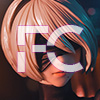Best Camera Lenses for Figure Photography
Taking photographs of anime figures can be a fun and rewarding hobby, but it can also be challenging if you're not sure what kind of lenses to use. In this guide, I'll discuss some key factors to consider when choosing lenses for photographing anime figures, including depth of field, aperture, and focal length. This guide mainly involves shooting with a DSLR or mirrorless style camera, though shooting with your phone camera can also produce fantastic results! Hopefully I can come up with a guide for phone cameras soon.
[cphoto:12]
Depth of Field
When it comes to depth of field, the most important thing to consider is the distance between the anime figure and the background. If you want to create a sharp, detailed image of the figure, you'll need to use a lens with a shallow depth of field. This means that only a small portion of the image will be in focus, with the rest appearing blurred. To achieve this effect, you'll need to use a lens with a wide aperture, such as f/1.4 or f/1.8 or create a large distance between the figure and the background.
[cphoto:14]
Aperture
Aperture is another important factor to consider when choosing a lens for photographing anime figures. Aperture refers to the size of the lens opening, which determines how much light is allowed to enter the camera. A wide aperture, such as f/1.4, will allow more light to enter the camera, which can be useful for shooting in low light conditions. A narrow aperture, such as f/16, will allow less light to enter the camera, which can be useful for shooting in bright conditions or when you want to create a larger depth of field and capture every detail in the scene.
[cphoto:13]
Focal Length
Focal length is the distance between the lens and the film or digital sensor in the camera. Lenses with a short focal length, such as a 35mm or 50mm lens, are called “normal” lenses because they produce images that look similar to what we see with our eyes. Lenses with a longer focal length, such as a 75mm or 100mm lens, are called “telephoto” lenses because they allow you to zoom in on your subject from a distance. Telephoto lenses are particularly useful for photographing anime figures because they allow you to capture detailed, close-up shots without having to get too close to the figure.
Difference Between Primes, Zooms and Wide-Angles
Prime Lenses
If you're serious about capturing the fine details of your figures, like sculpted hair strands, tiny accessories, or intricate paintwork, prime lenses are your best friend. A macro prime in the 60-100mm range is ideal for super-detailed close-up shots. These lenses let you get really close while keeping everything razor-sharp.
Even a standard prime around 35mm or 50mm (on crop sensor) can give you beautiful shots with natural-looking proportions and creamy background blur.
Zoom Lenses
If you like to shoot a whole set in one go (one figure, then a group, then some environment shots) a midrange zoom (like 24-70mm equivalent) gives you tons of flexibility. You can go from tight headshots to full-body or diorama scenes without changing lenses.
Telephoto zooms (70-200mm equivalent) are also amazing if you want that smooth background compression or to shoot from a distance (handy if you're using a large set or light tent).
Using a zoom gives you a lot of flexibility in framing, minimal lens swapping to get different looks and a more versatile session.
Wide-Angle Lenses
Shooting your figure inside a mini room or a carefully built set? A wide-angle lens (around 24mm or wider) lets you include more of the environment while keeping your figure prominent. These are especially fun for capturing figures in dynamic poses or with dramatic backgrounds.
Be careful though, wide-angle lenses distort the image more than their tighter focal length cousins.
[photo:52]
Other Considerations
Automatic vs Manual Focus
Figures don't move (unless you're really unlucky 😅), so take advantage of manual focus when possible. Use your camera's focus magnifier or focus peaking to nail the eyes or key details-autofocus can sometimes miss the mark on small subjects. Manual focus lenses also tend to be far cheaper than autofocus lenses and allow you to get some really high quality glass without breaking the bank. Many of my recent photos have been taken with the 7artisans 60mm F2.8 Mark II.
[cphoto:38]
Funky Lenses
There are plenty of weird and wonderful lenses that lend themselves perfectly to experimenting with figure photography. From old soviet style lenses with interesting bokeh to tilt-shift oddities, the nature of figure photography allows you to really play around with composition, style and weird effects.
Final Thoughts
Overall, the best lenses for taking photographs of anime figures will depend on the specific conditions of your shoot and the type of image you want to create. If you want to create a sharp, detailed image with a shallow depth of field, a lens with a wide aperture and a short focal length is a good choice. If you want to create a larger depth of field or shoot from a distance, a lens with a narrow aperture and a longer focal length is a better choice.
Ultimately there is no “best lens” for figure photography, nothing is perfect. Experiment with different lenses and settings to find the combination that works best for your photography.
Feel free to drop your favourite lenses or any extra tips in the comments! My personal favourite is the fujifilm 90mm f/2.
